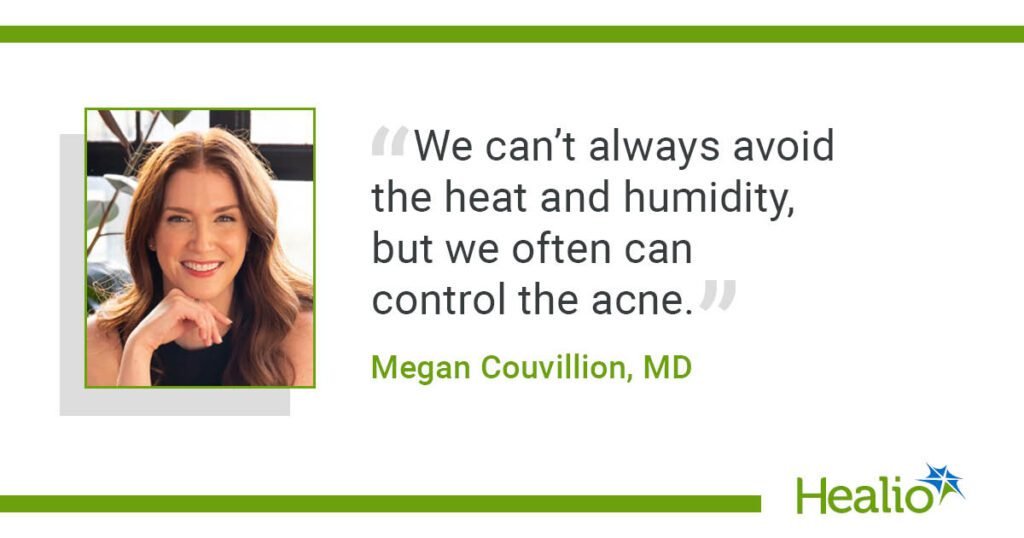Managing Acne in Summer: Tips and Insights
As summer approaches, individuals with acne-prone skin face unique challenges, including increased humidity and sun exposure that can exacerbate their condition. Dermatologist Megan Couvillion, MD, FAAD, provides valuable insights on how healthcare professionals can better support patients managing acne during these hot months.
Key Challenges for Acne-Prone Patients in the Summer
- Heat and Humidity: These factors heighten oil production, leading to more frequent breakouts.
- Sun Sensitivity: Certain acne medications, such as isotretinoin, enhance photosensitivity, raising the risk of sunburn.
- Misconceptions: Many believe that topical retinoids increase sun sensitivity; however, studies indicate they do not.
Best Practices for Summer Acne Management
Dermatologists and primary care providers (PCPs) can adopt several strategies to aid patients effectively:
-
Sunscreen Application:
- Use a broad-spectrum sunscreen with an SPF of 30 or higher daily. This should be applied regardless of outdoor plans, as incidental sun exposure can affect skin healing.
- For outdoor activities, opt for water-resistant formulas and reapply at recommended intervals.
-
Continue Acne Treatments:
- It’s essential to maintain acne medications year-round. Topical retinoids are effective for reducing oil and preventing breakouts. Adapalene gel is over-the-counter, while stronger versions require a prescription.
- Combining treatments can enhance effectiveness. Pair retinoids with topical antibiotics or benzoyl peroxide for optimal results.
-
Gentle Cleansing:
- Utilize a gentle foaming cleanser twice daily to remove excess oil and sweat, as well as post-activity cleansing after perspiration.
-
Additional Skin Care:
- For those with oily skin, incorporating salicylic acid can further diminish oil production.
Strategies for Sun Protection
-
Choose the Right Protective Gear:
- When wearing hats or helmets, keep hair away from the forehead. Hair oils can contribute to breakouts.
-
Comprehensive Sun Protection:
- Encourage the use of UPF clothing and to seek shade, especially during peak sun hours (10 a.m. to 2 p.m.).
- Lips should also be protected with an SPF lip balm.
-
Consider Skin Type:
- For patients with dry or eczema-prone skin, mineral sunscreens containing zinc oxide or titanium dioxide are gentler and less likely to irritate.
Communicating Guidelines Effectively
Patients often struggle with sun protection and acne management advice. Here are some strategies healthcare providers can use:
-
Provide Printed Resources: Creating handouts summarizing essential sun protection measures ensures patients have references at home.
-
Regular Follow-up: Maintain an ongoing dialogue about evolving treatment plans and skin care routines to accommodate seasonal changes.
Preventative Measures and Seeking Help
- Proactive Treatment Plans: Establish comprehensive strategies to avoid worsening acne during the summer months.
- Consult Specialists: For persistent or severe acne, partnering with a board-certified dermatologist is crucial for tailored treatments and minimizing scarring risks.
Conclusion
The summer season poses significant challenges for those with acne-prone skin but can be navigated effectively with proper strategies. By adhering to recommended skincare practices and sun protection measures, individuals can manage their condition while enjoying the warmer months. For additional resources, visit American Academy of Dermatology.
By staying informed and proactive, patients can maintain healthy skin and continue their acne treatment through the summer, ensuring both efficacy and comfort.


